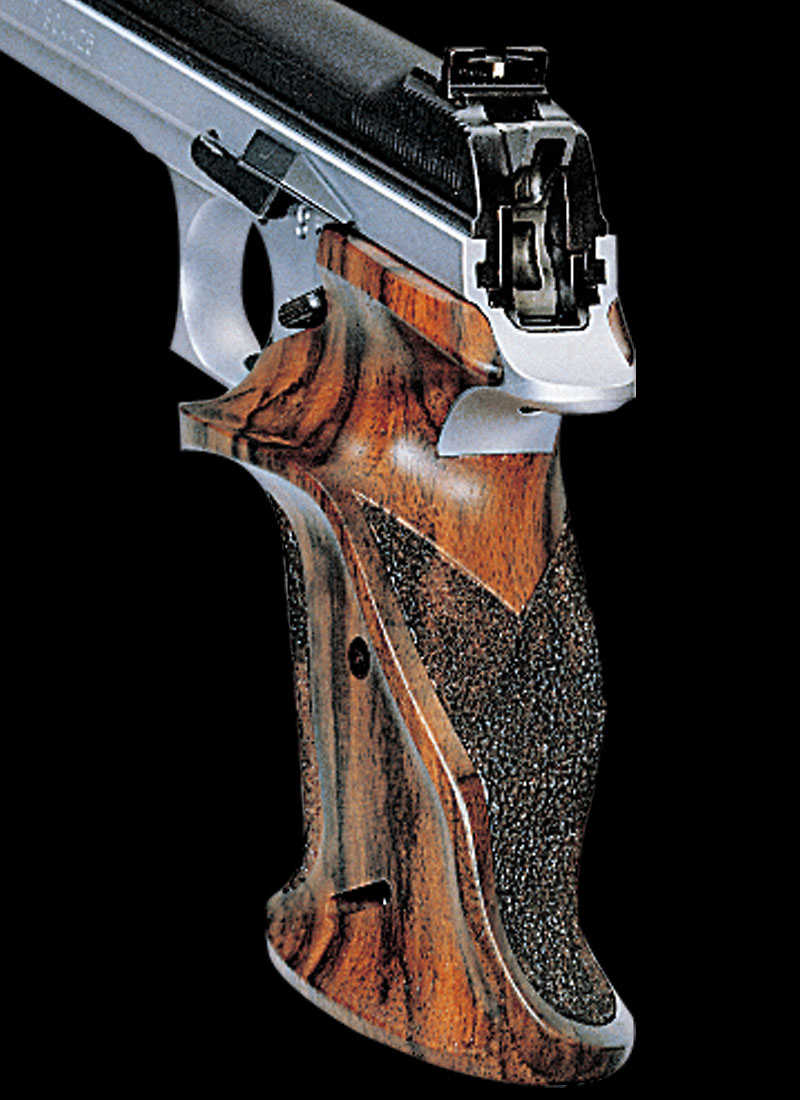Points Of Hand Pressure Pistol Grip

WHY SHOOTERS OFTEN SHOOT LOW AND TO THE LEFT
This variation of the lever type allows the use of a single hand for the dispatch of grease, which is very common. It supplies around 0.86 g per bomb. If you like one hand action, keeping the other hand open to do the supportive activities, pistol grip will be a good selection. Some may think of adjustment issues.


Points Of Hand Pressure Pistol Grip Tool
The following details the mechanics of why shooters often shoot low and to the left.
1. THE MECHANICS OF THE KNUCKLES OF THE HAND
If you hold a piece of 1 or 2 inch pipe loosely in your right hand with your palm down, and then grasp it firmly, you will find that it will tip down on the right side and up on the left.
That happens because the knuckles of your ring and little finger where they meet your hand, will have rolled forward and down. They will no longer be in alignment with the knuckles of the index and middle fingers.
You can test this without a piece of pipe.
Hold your hand out in front of you, palm down, and make a relaxed fist.
Then clench your fist tightly. And as you do that look at the knuckles of your ring and little finger where they meet your hand. They will move or roll down and forward some.
The third knuckle of the ring and little finger, is a hinge joint which allows those fingers to rotate some. And with that movement, they will clamp down and give tenacity to the grip.
The same knuckles of your index finger and your middle finger, are not hinge joints. They are stable.
So, when you grip a gun firmly, the knuckles of the index and middle finger will remain in place, and the knuckles of the ring and little fingers will roll forward.
And as the ring and little fingers clamp onto the gun-grip, they will twist down and around some to the left. As a result, the gun barrel will be pulled down and around to the left with the muzzle taking a nose dive.
The grips of double stack guns that are big for a hand, may prevent the ring and little fingers from moving and clamping down, and result in a weak grip.
2. THE MECHANICS OF THE LOWER ARM AND HAND
As a gun is grasped and shoved full out, the gun will rotate around to the left a bit. And with full extension, the muzzle will take a nose dive due to the arrangement of bones and muscles of the lower arm and hand.
Here is a note from Applegate's Kill or Get Killed about that...'the student may shove the gun forward when firing. This causes the barrel to point downward...'
You can test this yourself as well.
Clench your fist tightly, and shove it out to full extension. As it extends, the hand, wrist, and lower arm will rotate around to the left, and your hand will nose down some.
According to Applegate, the nose dive of the muzzle, will be more pronounced with the .45 because of its design and the angle of the grip.
To counter that, he said the muzzle should be raised up some and the wrist should be flexed to the right, which will bring the gun barrel in line with the arm.
He also recommended that the gun should be held down along one's side, with the arm and wrist locked. Then for firing, the arm should be raised stiffly using the shoulder joint as a pivot point, and the gun fired when it intersects the target.
3. THE MECHANICS OF THE TRADITIONAL MARKSMANSHIP GRIP
The 'traditional' grip is made up of the thumb, the web of the hand, and the middle, ring, and little fingers.
The index finger is supposed to stay aloof from the gun.
And the thumb is to be placed along the side of the gun but without pressing against the gun.
Now, the thumb and middle finger, with the middle finger being lower down in the hand, form an unbalanced pincer.
So, with an increase in grip pressure, the middle finger will pull the gun down and around to the left. And the stronger the grip pressure, the more the gun will twist down and around to the left.
Also, a heavy trigger pull, as with double action where the trigger is used to both cock and fire the gun, can result in added twisting down and around to the left.
According to Applegate, in a life or death situation, one will grasp their gun in an almost convulsive grip.
In Kill or Get Killed, he said ...'in the midst of battle excitement, a man instinctively grips his weapon in this manner and certainly does not take time to hold his breath, line up the sights, and squeeze the trigger.'
So what is the average home defender to do, to counter shooting low and to the left in real life threat situations?
Using a two handed grip might help, but that is doubtful. Per the NYPD's extensive SOP 9 study of thousands of Police combat cases, Officers with an occasional exception, fired with the strong hand.
You might practice and practice until you reach the skill level of a 'SWAT' shooter, but most can't or won't.
A good option is to use the P&S grip which provides a natural, and strong and level shooting platform with no twisting around to the left and no muzzle dive.
This is a link to this article in PDF form. You are welcome to download it and use/share it as you like. I am 80+, so this site may be gone at any time.
Use your go back button to return to theprior page, or click here for the index.